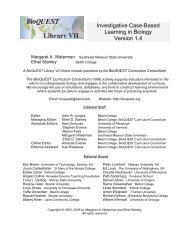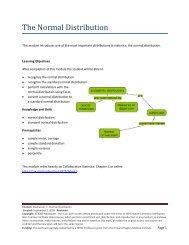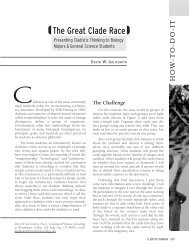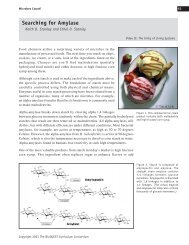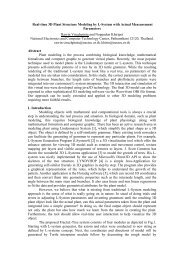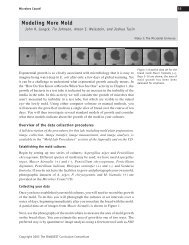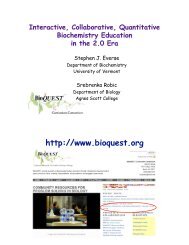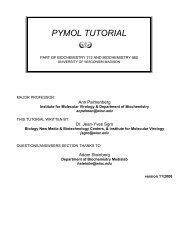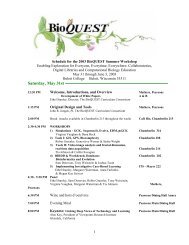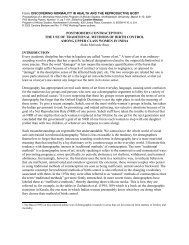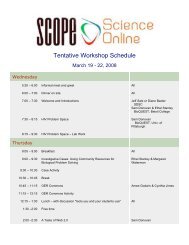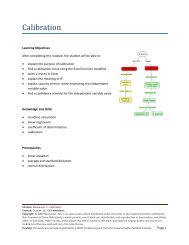CVCK - BioQUEST Curriculum Consortium
CVCK - BioQUEST Curriculum Consortium
CVCK - BioQUEST Curriculum Consortium
You also want an ePaper? Increase the reach of your titles
YUMPU automatically turns print PDFs into web optimized ePapers that Google loves.
30 <strong>CVCK</strong> Student Lab ManualTo the TeacherPedagogical MotivationsDrawing on the rich literature from mental models and qualitative physics, we findthat qualitative causal reasoning is not only a central and coherent aspect of humanmental life (Forbus & Gentner, 1986a; Pearl, 1987), but also expertise. Problemsolvingwithin physical domains typically begins with a qualitative causal analysisof the problem (deKleer & Brown, 1981; Forbus, 1984; Larkin, 1983; Williams et al.,1983). Educational research has built on this evidence with both detailed studies ofscientific concept acquisition (diSessa, 1983; Clement, 1983; Forbus & Gentner, 1986b;White & Horwitz, 1987) and pedagogical design with a qualitative causal emphasis(Brown et al., 1982; Reif, 1987; White & Frederiksen, 1986a & b; White & Horwitz,1987).In elementary physics education the pedagogical issues relate to whether, when andhow to introduce qualitative reasoning into a predominate emphasis onquantitative methods. In contrast, elementary biology education, e.g. a first-yearcollege course for non-majors, tends to an entirely qualitative approach that can bestbe described as contrastive classification. The students' primary learning task is toabsorb facts and causal relations as facts about a particular type, system, structure orfunction. Students are rarely expected to problem-solve and the laboratory isintended to give the student experience with real entities and procedural operationof equipment. Thus, although the student is given qualitative explanations, theyare rarely sufficiently formal and robust to allow her or him to learn underlyingprinciples and predict behavior. Most biology students do not come with sufficientbackground in physics. The following quote is typical of the standard textbooktreatment of the cardio-vascular system.“Even though the total cross-sectional area increases in the terminalarteries, arterioles, and capillaries and even though the rate of bloodflow through individual vessels decreases in tandem, these vessels,because of their small diameter, are the major sites of resistance in thecirculation. This is reflected in precipitous drops in blood pressure.”Much of this situation is not the fault of biology educators: biological systems areexceedingly complex and comparatively unknown. However, the cardio-vascularsystem is one of the few systems which is well-enough understood in terms of



